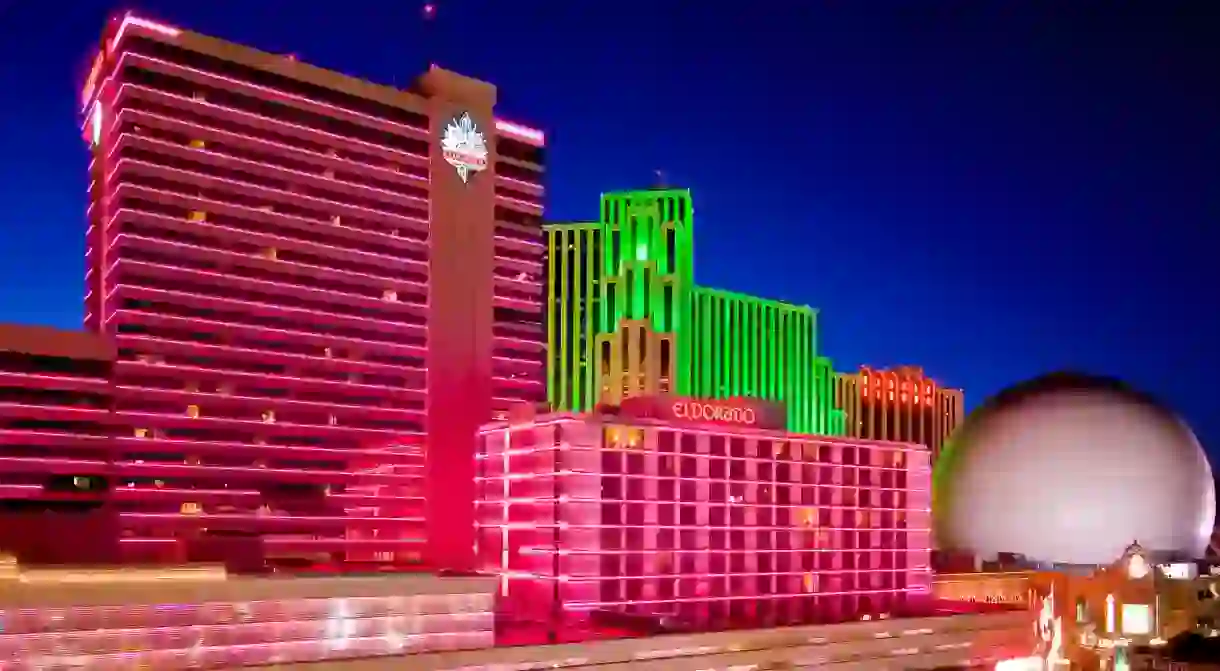A Brief History of the Reno Arch

Many cities have an iconic structure, a visual symbol that immediately signifies a place. In Paris, it’s the Eiffel Tower, in New York it’s the Empire State Building, in London it’s Big Ben and in Reno it’s the Reno Arch. The Arch stands where Virginia Street meets Commercial Row, and for nearly a century now, it’s stood as an emblem of the city itself.
But, the arch wasn’t intended to be permanent, nor was it designed to celebrate the city of Reno. Built in 1926 as part of the Nevada Transcontinental Railways Exhibition, the city celebrated the completion of the Lincoln and Victory Highways. After the festivities ended, Reno’s City Council voted to keep the arch in place and announced a contest to find a new city slogan. A man from Sacramento, CA came up with “biggest little city in the world” and it was added below the “RENO” on the arch.

The original Reno arch sign was a simple, metal structure dotted with neon and light bulbs. It stood for 40 years. In 1967, the original was replaced with a larger Googie-style sign that featured the city’s name on hexagonal plastic panels and a rotating starburst. The original arch went into storage. It was restored in 1994 as part of a set for the movie Cobb—about baseball player Ty Cobb—and later installed where Lake Street meets the Truckee River.

In 1987, celebrated neon company YESCO replaced the sign with a new creation that combined over 2,000 light bulbs with pink neon. This 80s-style sign is frequently featured in films such as Kingpin and Sister Act.

This year, the Reno Arch faces yet another renovation and renewal. The city sought public input for an updated, 21st-century color scheme via meetings and online polls. The consensus was for blue/white/silver, so blue-and-white lettering will replace the current fuchsia pink and brushed stainless steel substituted for shiny gold fittings. The newest rendition is set to finish by spring 2018.













